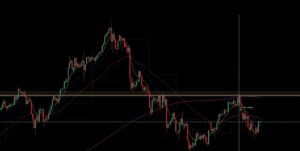
Forex Trading Essentials: Mastering Support and Resistance Levels

Navigating the Forex market effectively requires a deep understanding of key technical elements that drive price movements. Today, we’ll explore the concepts of support, resistance, and trends—essential tools that can significantly enhance your trading strategy and decision-making process.
What Are Support and Resistance?
Support and resistance levels are fundamental concepts in Forex trading technical analysis. They represent the price points on a chart where the market is likely to pause or reverse a trend.
- Support is the price level at which buying is strong enough to overcome selling pressure, potentially causing the price to bounce back up.
- Resistance is the opposite: a price level where selling pressure overcomes buying pressure, potentially causing the price to fall.
Identifying these levels can help traders make informed decisions about entry and exit points, as well as set realistic targets and stop-loss orders.
Understanding Market Trends
The direction in which the market moves—upward, downward, or sideways—is described as a trend. Trends can be long, medium, or short-term, and identifying them is crucial for predicting future price movements.
- Uptrends are characterized by higher highs and higher lows.
- Downtrends feature lower lows and lower highs.
- Sideways/Horizontal trends occur when the price is not making clear upward or downward movements.
Combining Support, Resistance, and Trends
By analyzing where support and resistance levels align with trend lines, traders can gauge potential breakout points. For example, if the price breaks beyond resistance in an uptrend, it could indicate a continuation of the uptrend, offering a strategic buying opportunity.
Conversely, a price that falls below a support level in a downtrend might suggest the trend will continue lower, which could be a good time to sell or short.
Strategies for Trading Support and Resistance
- Reversal Trading: Enter a buy order when the price bounces off support in an uptrend, or a sell order when it falls from resistance in a downtrend.
- Breakout Trading: Place a trade in the direction of a breakout from established support or resistance levels, anticipating new trends or trend continuations.

Understanding and utilizing support, resistance, and trend analysis are critical for any Forex trader’s toolkit. These concepts help predict price movements and form a foundation for developing robust trading strategies.
Are you looking to enhance your understanding of these crucial trading concepts? Financial Markets Online is here to guide you. With our FX Fast Track course, you’ll dive deeper into the mechanics of Forex trading, gaining hands-on experience and expert insights.
Take the first step towards becoming a Forex authority — enroll in our FX Fast Track course today and gain the competitive edge you’ve been searching for!



